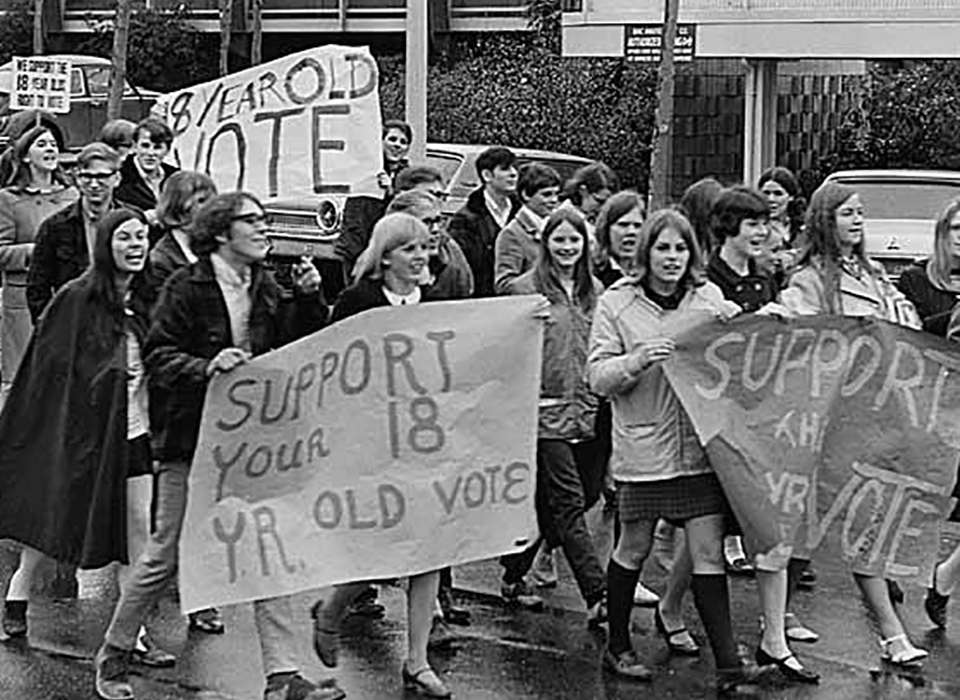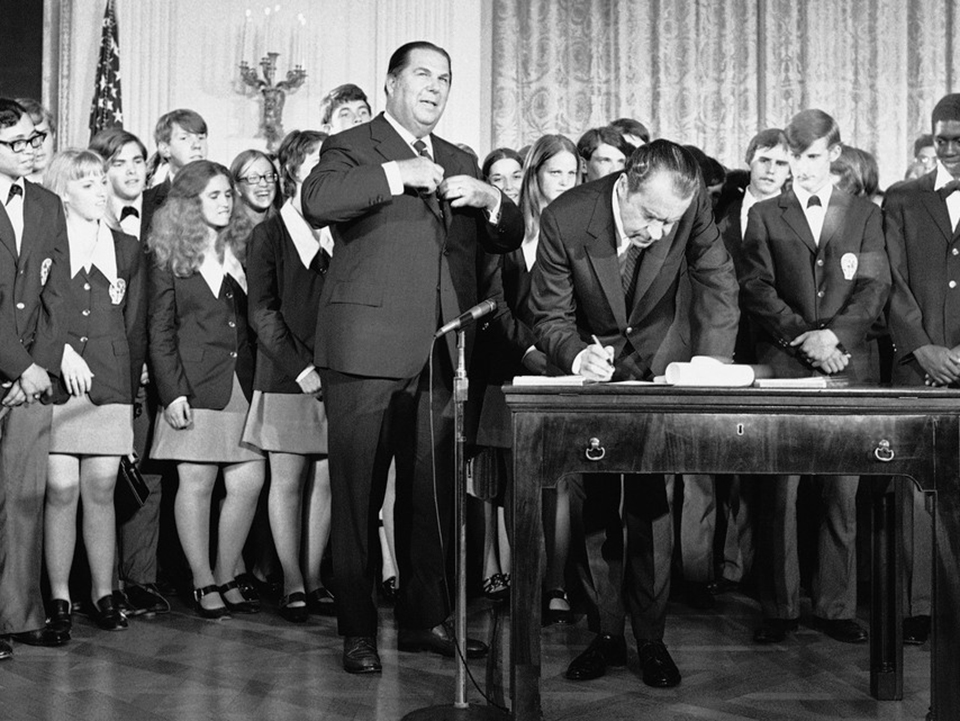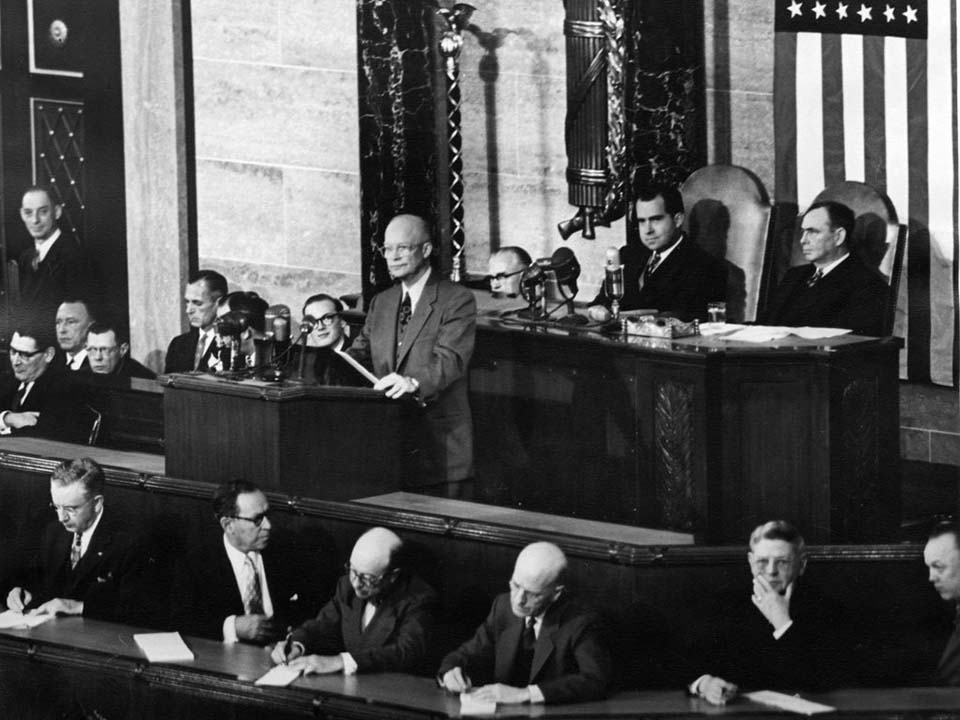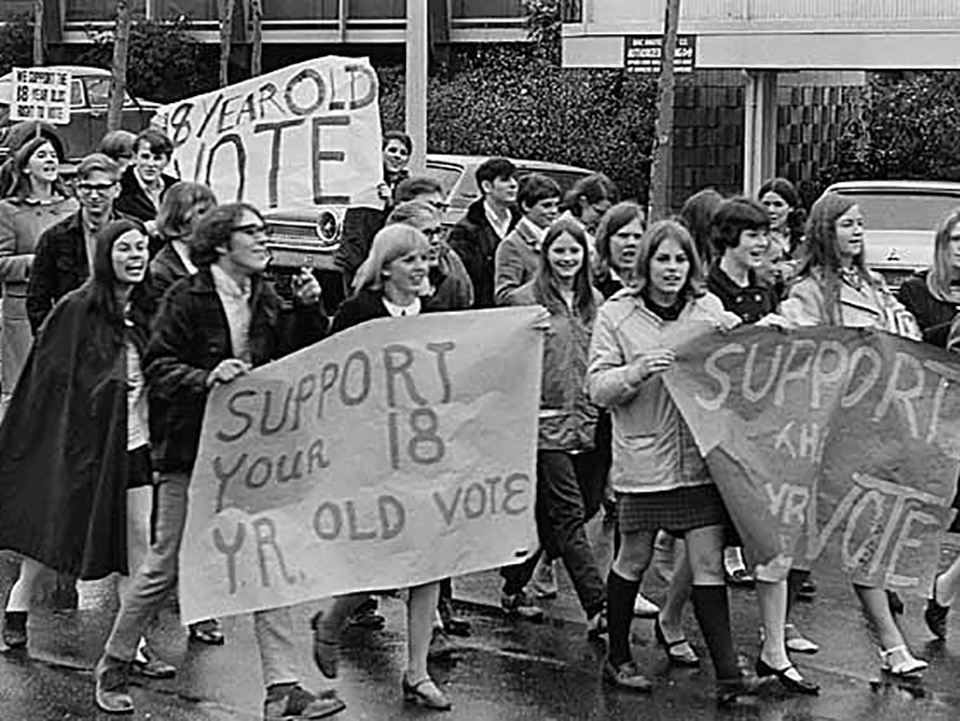“The right of citizens of the United States, who are 18 years of age or older, to vote, shall not be denied or abridged by the United States or any state on account of age.”
- Twenty-sixth Amendment
On July 5, 1971, US President Richard Nixon signed the 26th Amendment into law. The amendment, which had passed through the Senate, House, and states in record time, lowered the voting age from 21 to 18. Though the record-breaking speed of its passing seemed like the amendment was a quick victory, the reality was a decades-long multi-generation fight dating back to World War II.
President Richard Nixon in July 1971 signs the Constitution's newest amendment, which guarantees 18-year-olds the right to vote in all elections. Robert Kunzig, head of the General Services Administration, waits to officially certify the ratification of the 26th amendment. Image courtesy of the Associated Press.
Less than a year into US involvement in World War II, President Roosevelt and his administration faced a dilemma: of the 20 million eligible men who registered for the draft, 50 percent were rejected either for health reasons or because they were deemed illiterate. No longer on the sidelines of the war, the need for troops meant that the United States government needed to increase the draft numbers, and move to expand the eligible ages. On November 11, 1942, Congress approved lowering the minimum draft age to 18 and raising the maximum to 37. Soon after, the slogan “Old enough to fight, old enough to vote” was born.
West Virginia congressman Jennings Randolph became an ardent supporter for lowering the age. In 1942, he introduced the first of 11 bills he sponsored over his tenure in Congress. Despite support from First Lady Eleanor Roosevelt and a number of senators and representatives, Congress failed to pass any legislation, but a popular movement was growing. In 1943, Georgia became the first state to lower the voting age for state and local elections to 18, with Kentucky following suit in 1955.
"I believe that our young people possess a great social conscience, are perplexed by the injustices which exist in the world and are anxious to rectify these ills."
Senator Jennings Randolph
The movement to lower the voting age began to gain grassroots traction when newly-elected President Dwight D. Eisenhower expressed his support in his 1954 State of the Union address: “For years our citizens between the ages of 18 and 21 have, in time of peril, been summoned to fight for America. They should participate in the political process that produces this fateful summons. I urge Congress to propose to the States a constitutional amendment permitting citizens to vote when they reach the age of 18.”
President Dwight D. Eisenhower Delivers his State of the Union message before a joint session of Congress assembled in the chamber of the House of Representatives at the capitol in Washington, DC. Image courtesy of the US National Archives.
Still, it would not be until much of the American public became disillusioned by the lengthy and costly war in Vietnam in the mid 1960s that the movement to lower the voting age gained widespread public support. “Old enough to fight, old enough to vote” found its way back into the American consciousness in the form of protest signs and chants. Then-Senator Randolph and other politicians continued to push legislation to lower the age to 18, including passing an amendment into 1965’s Voting Rights Act in 1970 that applied lowering the age to federal, state, and local elections. Even as he signed the amendment into law, President Richard Nixon issued a public statement that the federal government regulating state and local elections was likely to be deemed unconstitutional and that only an amendment would secure this right. He was right, and the amendment was struck down in the 1970 Supreme Court case Oregon v. Mitchell, ruling that the federal government could not make mandates for state and local elections. The result was a mixed system in which state and local elections had different rules than federal elections, which resulted in logistical problems on election days in states across the country. Protests and lobbying efforts, largely led by activists from the National Education Association and their allies such as the AFL-CIO and the NAACP, resumed in large numbers, as men between the ages of 18 and 20 feared their draft numbers being called despite having no say in electing their representation. Dubbed “Project 18,” the pressure continued to mount for legislators to take action. Regional chapters of the NAACP organized youth conferences and marches in Chapel Hill, Washington, D.C., and other major cities around the country.
Demonstration for reduction in voting age, Seattle, 1969. Image courtesy of MOHAI, Seattle Post-Intelligencer Collection, 1986.5.50631, photograph by Tom Barlet.
On March 10, 1971, the Senate voted unanimously in favor of a Constitutional amendment lowering the voting age to 18, followed by an overwhelming majority of the House voting in favor on March 23. The states swiftly ratified the amendment, and it took effect on July 1, 1971, nearly 30 years after Senator Randolph first proposed lowering the voting age. In response to its passing, the senator reflected “I believe that our young people possess a great social conscience, are perplexed by the injustices which exist in the world and are anxious to rectify these ills.”
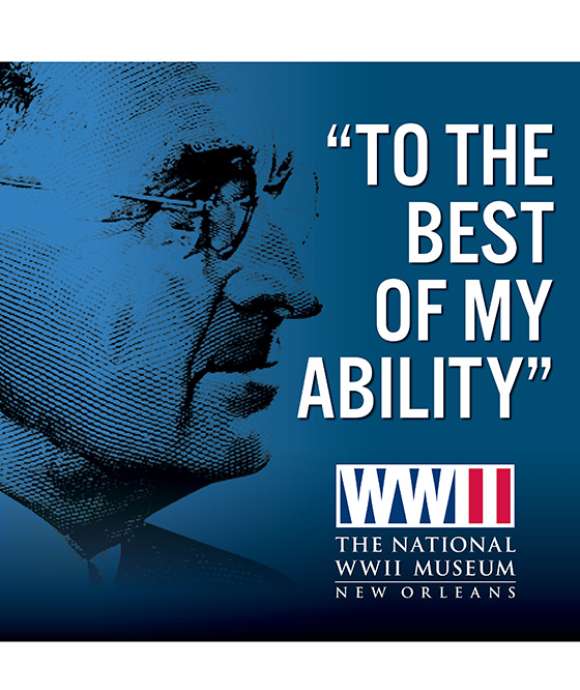
"To The Best of My Ability"
"To the Best of My Ability" is a nine-part podcast series that examines what happens in the wake of FDR's death, pulling directly from the newly sworn-in President Harry S. Truman’s diaries, oral histories from the men and women who lived through it, and more.
Gemma R. Birnbaum
Gemma Birnbaum is the former Assistant Vice President for the Media and Education Center at The National WWII Museum.
Cite this article:
MLA Citation:
APA Citation:
Chicago Style Citation:
